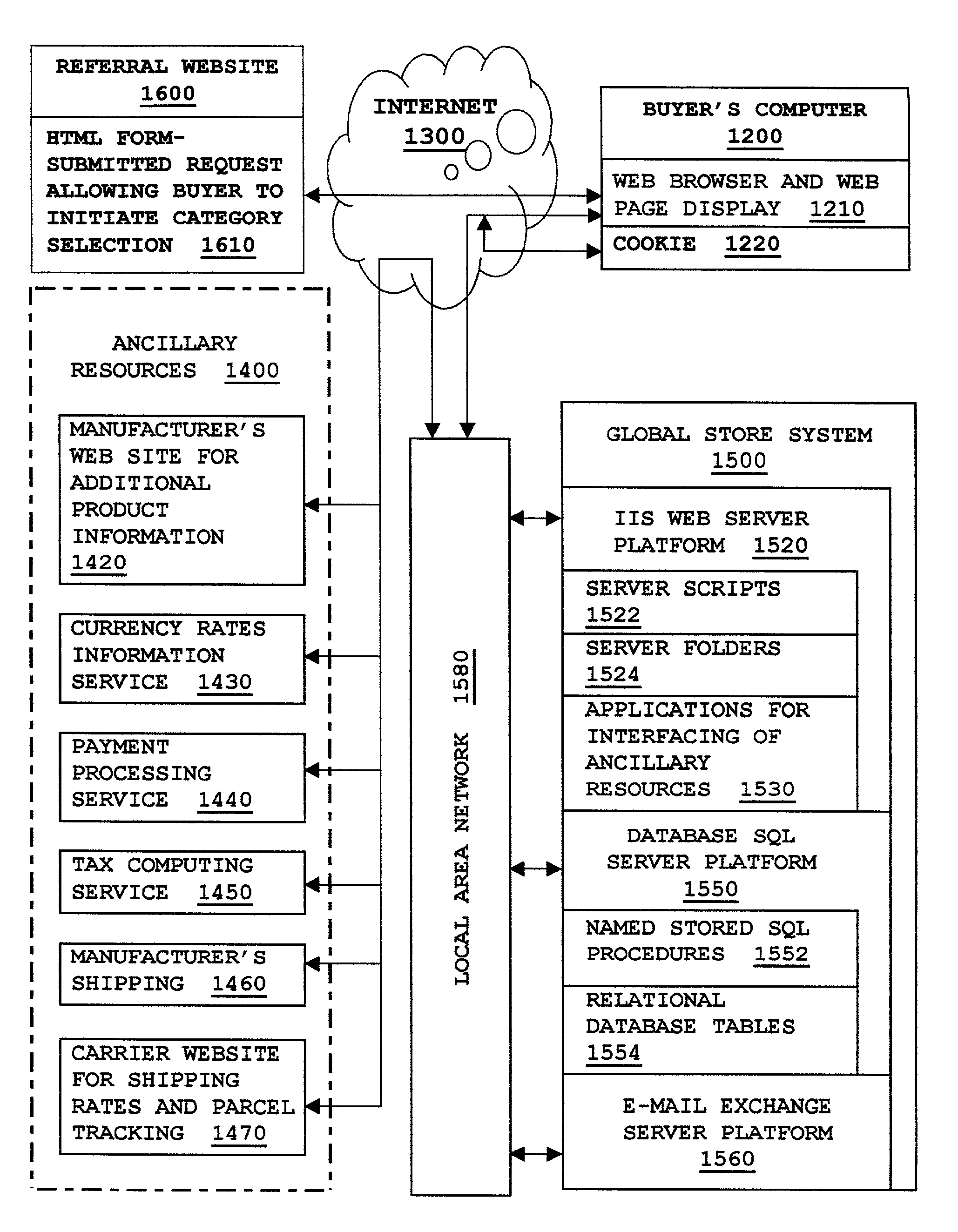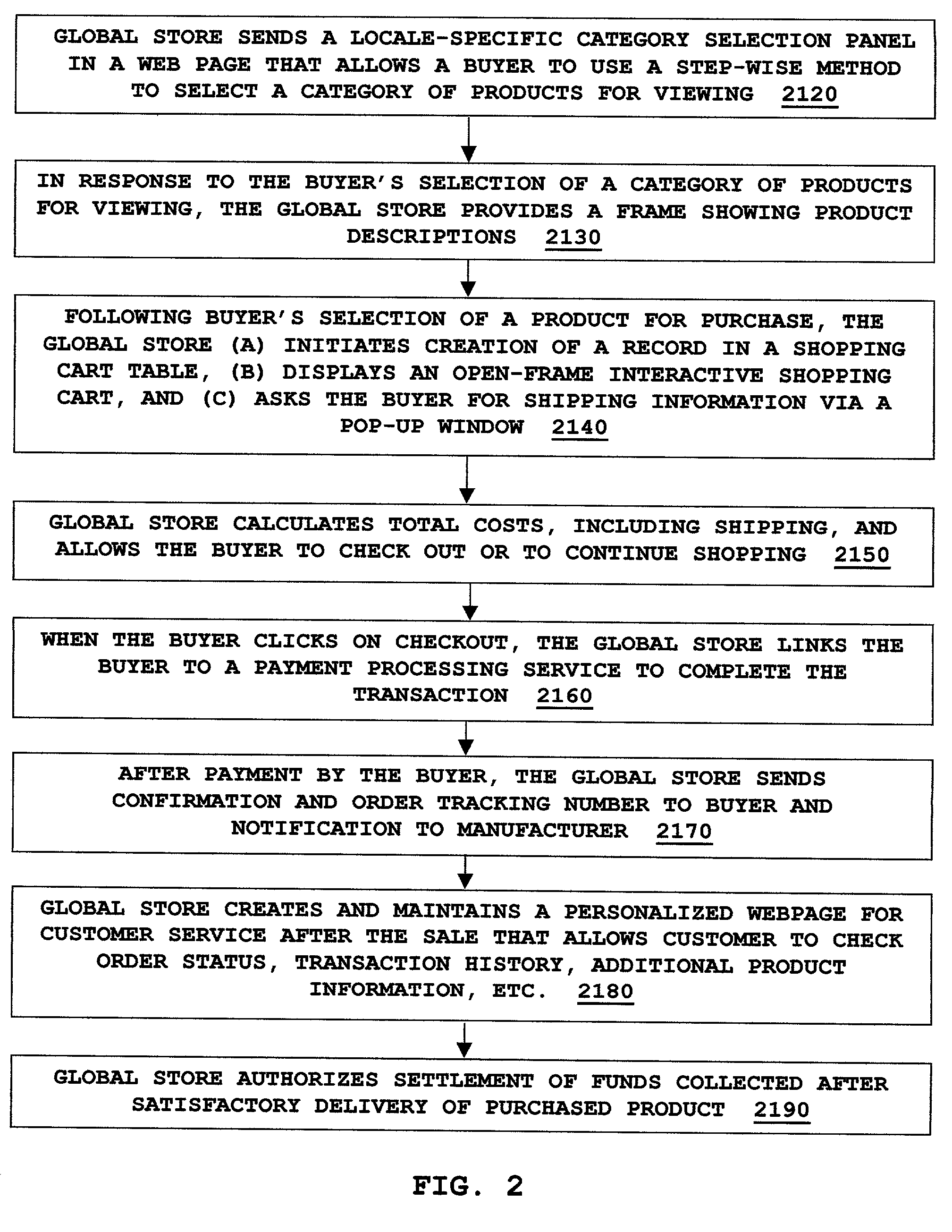Manufacturers could conceivably market their products to Buyers around the world by performing all of the above necessary functions themselves, but practical considerations usually cause the manufacturer to outsource many functions of global commerce to the Legacy Channel.
Furthermore, increasing use of English as a de facto language of commerce and increasing access to good, real-time translation technology will inevitably lower language barriers.
This multi-headed e-commerce approach is a crude interim step that fails to meet the emerging needs of manufacturers who desire global sales.
Loss of the efficiencies and economies of a truly global approach make the prices of their products less competitive than should be possible, and there is the additional problem of entering and maintaining current and accurate information across multiple databases.
Buyers are reluctant to make international purchases when they fear that they will have no practical recourse if they pay for a product but either do not receive it or find the product is not acceptable.
Many conventional e-commerce Websites have sought to sell products globally, but few if any have made a serious commitment to globalization by providing good translations in multiple languages.
(So far,
machine translations are so lacking in accuracy and idiomatic expression that they are likely to inspire mirth rather than confidence in a Buyer.)
Furthermore, no site offers products of a multitude of manufacturers along with
customer support across more than one language, support that is needed for Buyers to be well informed about
international shipping, duties, warranties, currency conversion, repair centers, and other issues important to Buyers.
Prior art in the area of electronic commerce has not yet provided a flexible
system to use a single,
central database to support sales to Buyers around the world.
Efficiencies and economies of scale are largely lost when marketing becomes thus fragmented.
Furthermore, Buyers lose the benefit of an expanded selection of products coming from all locales.
In summary, the Legacy Channel of global trade is not practical for most businesses.
Furthermore, as will be described below, the promise of global e-commerce in a
Virtual Channel of global trade to supplant the Legacy Channel has not yet been realized; efforts have thus far failed sufficiently to integrate existing art and new art to capitalize on new trends and developments.
However, no prior art takes
advantage of (a) multi-version, locale-specific innovations in marketing, (b) use of
Referral Websites from a multitude of locales, combined with (c) other Ancillary Resources to offer truly global sales over
the Internet.
Prior art has not solved the problem of marketing globally from a single-point.
Yahoo and other e-commerce companies have discovered that their widely recognized brand names are, in themselves, not sufficient for attracting global e-commerce business.
The patent by Chelliah et al discloses a relatively comprehensive e-commerce system operating from a
single point, but still it fails to meet a basic need of global commerce to provide alternative versions of marketing information for Buyers across linguistic and cultural groups; it can only accommodate Buyers who speak a given language.
The same limitation is seen in the recent patent by Wong (U.S. Pat. No. 6,515,690 “Integrated business to-business Web commerce and business
automation system,” 2000).
However, his patent makes no
accommodation to differences in language or customs for users of the
database.
Unfortunately, that approach is not valid unless a viewers' Browser is programmed to send preferred language and preferred character set information along with a request.
Given that Browsers are not uniformly programmed to send that information, the Danneels' approach is not a strong contender as a general solution for automatically and transparently identifying a preferred language for a viewer.
There are several problems with this approach, as follow:1) An extra step requiring the visitor to specify a language choice is introduced prior to the viewer accessing the content desired by the
Client.2) No provision is made to determine the character set used by the viewer's Browser.3) This approach is not transparent with respect to language usage determination.
Because the viewer is involved in language selection, there is an obvious limitation to making the viewer comfortable that the site is not foreign.4) Levy fails to show how the viewer's node address is actually used to determine the viewer's presumed locale and preferred language.
Harrington's design does not allow for global sales because her
referral Website only puts Buyers using a single language in contact with a vendor using the same language.
Therefore, this design does not allow Buyers to get customized treatment that caters to their language or culture.
There is a significant problem, however; very often, a Buyer places one or more items in a shopping
cart but then abandons the
cart without completing a purchase.
Unfortunately, prior art has failed to incorporate good, common sense sales techniques into the design of shopping cart functions.
Hidden from view, the selected products are more easily forgotten and abandoned.
Yonezawa et al (U.S. Pat. No. 5,905,973 “
Shopping Basket Presentation Method for an Online Shopping
System,” 1999) provide a persisting open shopping cart window from the outset of a Buyer's viewing of products, but there is a failure to provide total cost, including shipping.
This is a significant failure because not knowing total cost means that a Buyer does not have the information needed to make a buying decision.
Though this system makes clever use of UPNs and the Web to find information about some products, it does not enable a
consumer with a guaranteed way of accessing product information for any given product that a
consumer may have purchased.
Furthermore, there is no provision to make information available in a language understood by the consumer.
However, that same flexibility can cause
confusion when applied across suppliers.
When a plurality of suppliers could organize product information in a plurality of ways, the resulting structure of a combined hierarchy would not lend itself to efficient finding of products.
Furthermore, should different suppliers present their products in a combined hierarchy but in different languages, the Buyer would be truly confused and lost.
Therefore, Zellweger's patent cannot be readily applied to the problem of helping Buyers find products offered by a myriad of manufacturers; and, furthermore, Zellweger does not attempt to deal with the problem of presenting menus in various languages to accommodate Buyers around the world.
Furthermore, no provision is made in this patent to accommodate Buyers wanting to use a variety of native languages to find products.
Furthermore, time outs and other connection-failure strategies are required.
Prior art, however, does not encompass a comprehensive global electronic commerce system that combines both innovative art and the following conventional art:1) Automated Communications: Interfaces for E-Mail notifications,2) Cookies,3)
Payment Processing,4) Tax Computing Service,5) Parcel Tracking,6) Currency conversion, and7) Calculation and Display of Shipping Costs
With conventional art, products are placed in a “shopping cart.” Unfortunately, that cart often is later abandoned with no purchase made.
This approach overcomes the
disadvantage of prior art in which the Buyer is implicitly told that the Buyer need only “think about” completing the purchase “later.” That implicit message is poor sales technique.
No nation can afford to be left out of the global economy.
 Login to View More
Login to View More  Login to View More
Login to View More 


